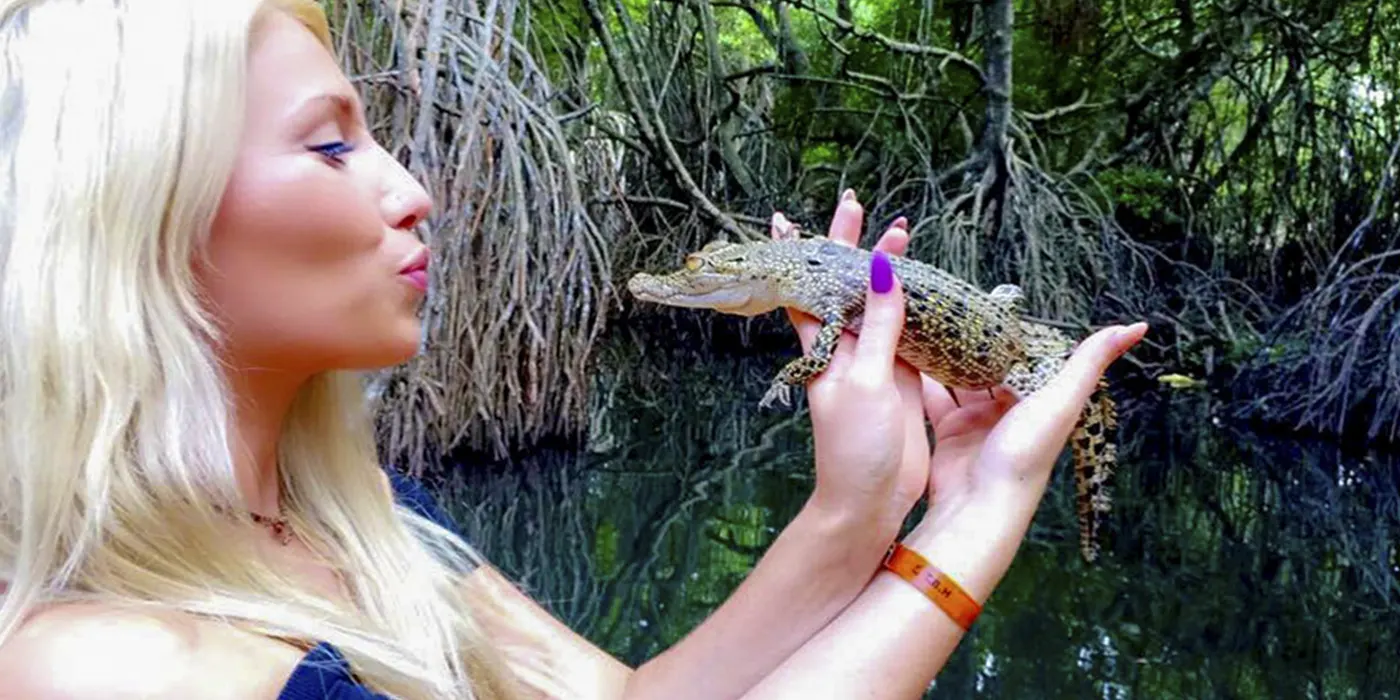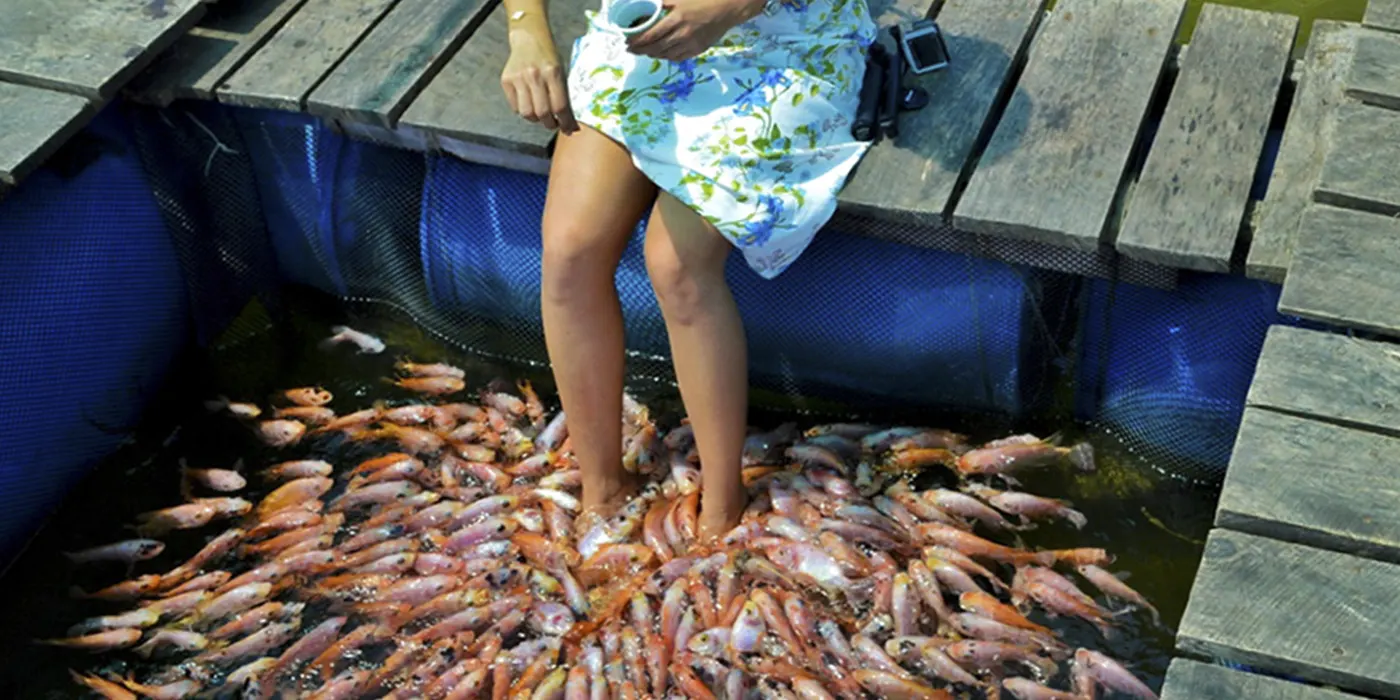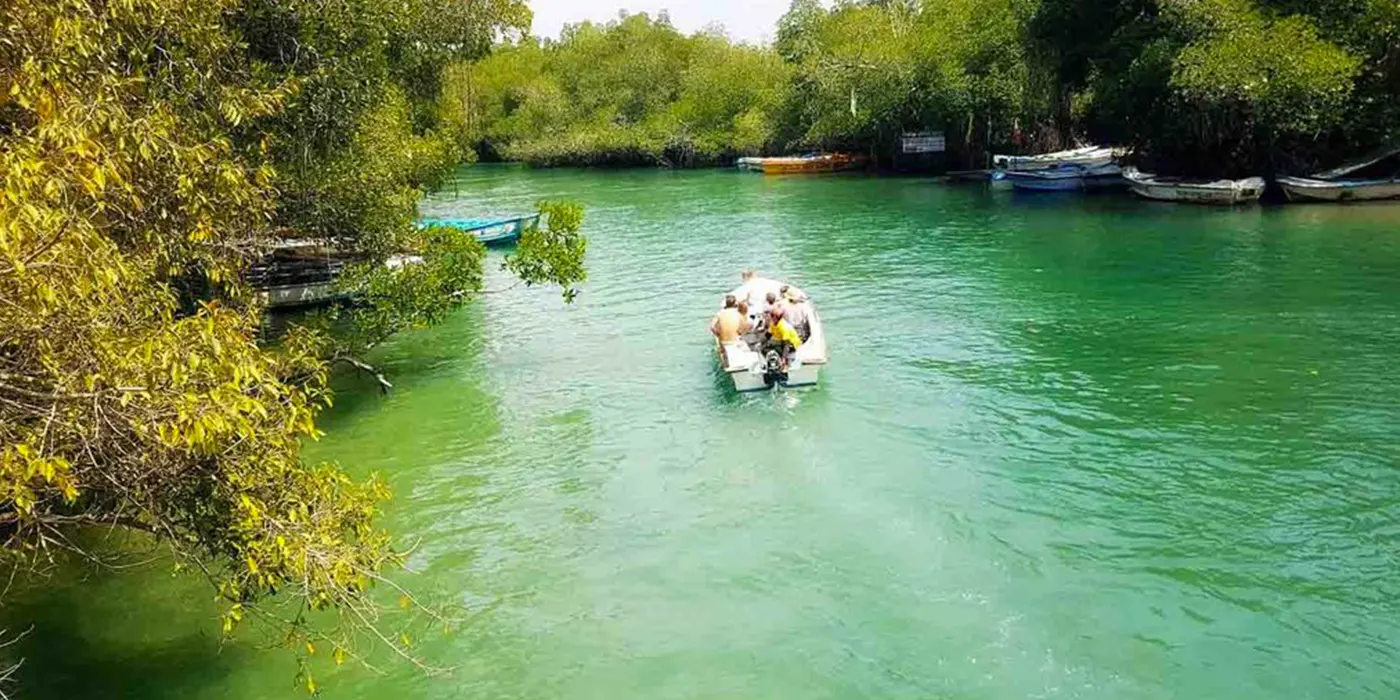Nestled on the southern coast lies a hidden gem – the Madu River safari on this unique waterway promises an unforgettable encounter with Sri Lanka’s rich biodiversity and fascinating history.
What makes the Madu River truly special is its dense network of mangroves. These remarkable trees thrive in brackish water, forming intricate ecosystems that teem with life. Unlike typical rivers, the Madu River boasts a labyrinth of waterways weaving through these emerald forests, creating a serene and captivating environment.
The Madu River Ecosystem

The Madu River, situated near the town of Balapitiya, plays a vital role in Sri Lanka’s ecological balance. This complex network of waterways, lagoons, and islands forms a designated Ramsar wetland, highlighting its international significance. The heart of the ecosystem lies in the extensive mangrove forests. These resilient trees act as natural filters, purifying water and preventing coastal erosion. Their tangled roots create a haven for a diverse range of aquatic life, ensuring the river’s continued health.
Historical Significance of Madu River
The Madu River’s story intertwines with Sri Lanka’s ancient past. Dotted along its waterways are several islands, each holding a piece of the island’s history. Koth Duwa, a small island, is believed to have once housed a sacred relic – the tooth of the Buddha. Even today, a majestic fig tree, a descendant of the historic Jaya Sri Maha Bodhi tree in Anuradhapura, stands sentinel on the island. This connection to Sri Lanka’s Buddhist heritage adds a layer of cultural significance to the Madu River experience.
Exploring the Wildlife of Madu Ganga

Embark on a Madu River safari, and prepare to be dazzled by the incredible variety of flora and fauna. The lush mangroves provide a sanctuary for over 300 species of birds, from the vibrantly colored kingfishers to majestic birds of prey soaring overhead. Keep an eye out for shy water monitors basking on the muddy banks, and with a bit of luck, you might even catch a glimpse of a crocodile gliding silently through the water.
The diversity extends beyond sight. The river’s depths harbor a wealth of fish and crustaceans, while the surrounding forests hum with insect life. Interestingly, the Madu River ecosystem provides a habitat for both endemic species, found nowhere else on Earth, and threatened species struggling for survival. Spotting a flock of Sri Lanka bush warblers or a shy purple-faced langur monkey adds an extra thrill to your safari adventure.
Madu River Safari Experience

A typical Madu River safari takes place on a traditional wooden boat, expertly navigated by a local guide. As you glide through the tranquil waterways, the verdant mangroves create a natural tunnel, dappled sunlight filtering through the leaves. The knowledgeable guide will point out the resident wildlife, from elusive reptiles to brightly colored birds flitting through the branches.
The safari explores different sections of the river, each offering unique sights. You might navigate narrow channels fringed by vibrant mangroves, or enter open lagoons teeming with birdlife. Be prepared to be captivated by the sheer tranquility of the environment, occasionally broken only by the gentle lapping of water or the call of a distant bird.
Unmissable Attractions

Your Madu River adventure extends beyond the boat trip. A stop at Koth Duwa island allows you to explore the historic Buddhist temple and marvel at the ancient fig tree. Other tiny islands, adorned with vibrant green vegetation, provide picturesque backdrops for capturing memories of your journey.
For a truly unique experience, some safaris offer the opportunity to pamper your feet with a natural fish spa. Imagine the gentle nibbling of fish as they remove dead skin cells from your feet! You might also get the chance to observe cinnamon peelers extracting the fragrant bark from cinnamon trees – a glimpse into Sri Lanka’s rich spice heritage.
Conservation Efforts to Protect a Paradise
The Madu River faces challenges like pollution and habitat loss. Thankfully, conservation efforts are underway to ensure its continued health. Responsible tour operators prioritize eco-friendly practices, minimizing the impact on the delicate ecosystem. As a visitor, choosing such operators ensures your trip contributes to the river’s well-being.
The Madu River’s mangrove forests played a crucial role in mitigating the devastating effects of the 2004 tsunami. Their dense network acted as a natural barrier, absorbing the force of the waves and protecting coastal communities. This event highlights the vital role these ecosystems play in environmental protection, making conservation efforts even more crucial.
Planning Your Madu River Safari

Sri Lanka boasts a tropical climate, making it a year-round destination. However, for the most pleasant weather, consider visiting during the dry season, which falls between December and April. During this period, you can expect clear skies and sunshine, perfect for exploring the river and soaking up the natural beauty. However, the Madu River retains its charm throughout the year, with lush greenery and abundant wildlife even during the occasional rain shower.
Getting to Madu River is relatively straightforward. The closest town, Balapitiya, is easily accessible by car, bus, or train from major Sri Lankan cities like Colombo and Galle. Once in Balapitiya, numerous tour operators offer Madu River safari packages. Opting for a reputable and eco-friendly operator ensures a responsible and sustainable experience.
The Madu River safari promises an unforgettable journey into the heart of Sri Lanka’s natural wonders. As you navigate the emerald labyrinth of mangroves, encounter fascinating wildlife, and uncover historical secrets, you’ll create memories that will last a lifetime. So, embark on your Madu River adventure, and prepare to be enchanted by this unique and precious Sri Lankan ecosystem.
Madu River Safari: Frequently Asked Questions

When is the best time to visit the Madu River?
The dry season, between December and April, offers the most pleasant weather with clear skies and sunshine. However, the Madu River can be enjoyed year-round, with lush greenery and abundant wildlife even during the rainy season.
How do I get to the Madu River?
The closest town, Balapitiya, is easily accessible by car, bus, or train from major cities like Colombo and Galle. Once in Balapitiya, numerous tour operators offer Madu River safari packages.
What are some things to keep in mind while on a Madu River Safari?
Be respectful of the environment by avoiding littering and maintaining a quiet demeanor to avoid disturbing wildlife. Choose a responsible and eco-friendly tour operator that prioritizes sustainable practices.
What else can I do besides the boat safari?
You can explore the historic Buddhist temple on Koth Duwa island, experience a natural fish spa treatment, observe cinnamon peelers harvesting the bark from cinnamon trees, and more.
What is the price for a Madu Ganga boat safari?
The price for a Madu Ganga boat safari varies depending on the tour operator and the length of the safari. Generally, prices range from $30 to $50 per person. It’s advisable to check with tour operators for the most current pricing and package options.
How long does the Madu River boat ride last?
Typically, a safari can last between 2 to 3 hours.
Is the Madu River Safari suitable for children?
Yes, the Madu River Safari is generally considered suitable for children. Most tour operators welcome children on their Madu River safaris. Some even offer child-friendly pricing.
What measures are taken to protect the Madu River ecosystem during the safari?
Highlight eco-friendly practices adopted by tour operators.
